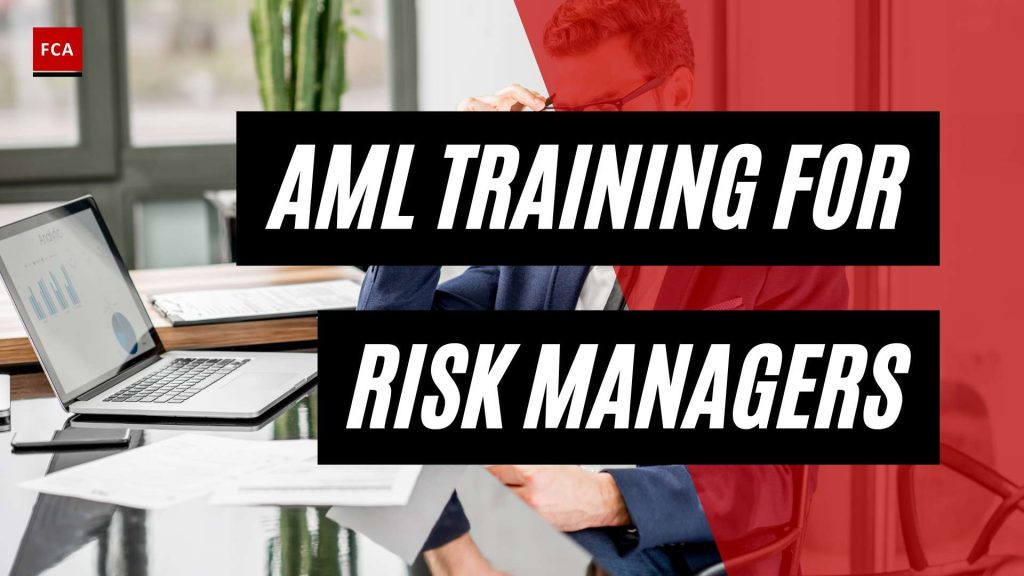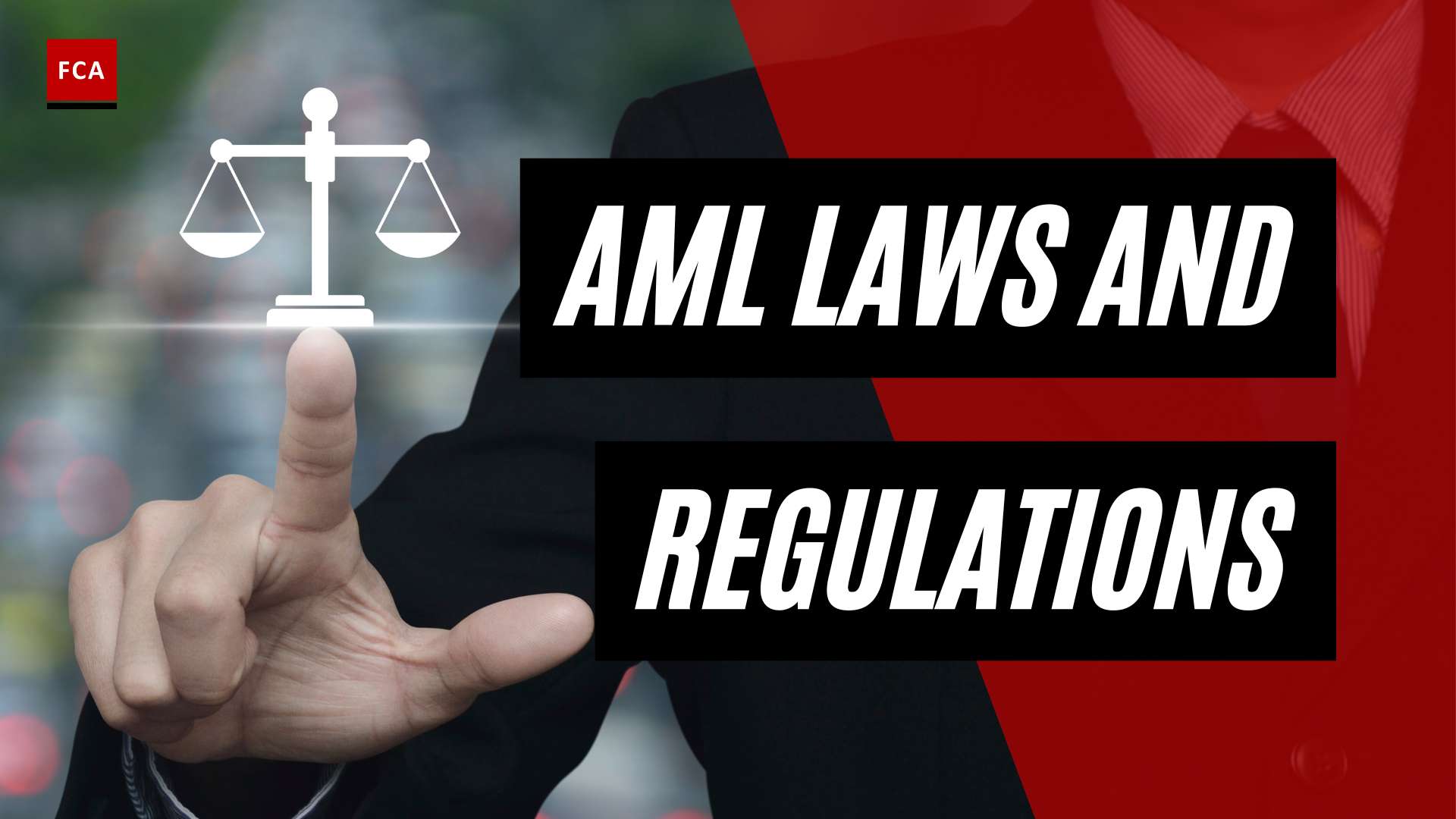AML Training for Risk Managers
When it comes to combating financial crimes and ensuring regulatory compliance, AML training plays a vital role in equipping risk managers with the necessary knowledge and skills. AML training for risk managers focuses on the unique challenges they face in identifying and mitigating money laundering risks within their organizations.
Importance of AML Training
The importance of AML training for risk managers cannot be overstated. Financial institutions are required to adhere to strict AML regulations to prevent activities such as money laundering, terrorism financing, and other financial crimes. Adherence to these regulations is not only about doing what’s right but also about avoiding significant costs that can result from non-compliance (Source).
Through comprehensive AML training, risk managers gain a deep understanding of the regulatory framework and their role in implementing effective risk management strategies. They learn about the latest AML laws, regulations, and industry best practices, enabling them to identify potential vulnerabilities and develop robust controls to mitigate risks.
Consequences of Non-Compliance
Non-compliance with AML regulations can have severe consequences for financial institutions. Regulatory bodies impose hefty fines on institutions that fail to meet their AML obligations. For example, Goldman Sachs was fined $2.9 billion in 2020 for its involvement in the 1MDB scandal, a clear violation of AML and corruption regulations.
In addition to fines, non-compliance can result in significant financial burdens for institutions. Remediation efforts, such as improving internal systems, retraining staff, hiring additional compliance personnel, or implementing new technologies, become necessary when an institution is found to be non-compliant with AML regulations. These remediation efforts add to the financial burden.
Furthermore, non-compliance can lead to class-action lawsuits from shareholders or customers, resulting in additional substantial financial payouts. The reputation and trust of the institution are also at stake. Non-compliance can lead to a suspension of certain business activities or the revocation of licenses, directly impacting the institution’s revenue.
Given the potential consequences of non-compliance, AML training for risk managers becomes an essential investment for financial institutions. By ensuring that risk managers are well-versed in AML regulations, reporting requirements, and risk assessment techniques, institutions can proactively mitigate AML risks and protect their reputation and bottom line.
In the next sections, we will delve into the key components of AML training for risk managers, including regulatory understanding, risk assessment and management, reporting mechanisms, and specialized training tailored to their unique roles.
Key Components of AML Training
To effectively mitigate the risks associated with money laundering and other financial crimes, comprehensive AML training is essential for risk managers. This training equips them with the knowledge and skills necessary to identify, assess, and manage potential risks. The key components of AML training for risk managers include regulatory understanding, risk assessment and management, and reporting mechanisms.
Regulatory Understanding
An integral component of AML training for risk managers is a deep understanding of the relevant regulatory framework. They must be familiar with the laws, regulations, and guidelines that govern anti-money laundering practices. This includes understanding the requirements set forth by regulatory bodies such as the Financial Action Task Force (FATF) and local regulatory authorities.
By staying abreast of the latest regulatory developments, risk managers can ensure their organizations’ compliance with AML regulations. This includes being knowledgeable about customer due diligence (CDD) requirements, know-your-customer (KYC) procedures, transaction monitoring, and suspicious activity reporting.
Risk Assessment and Management
Risk assessment and management are crucial aspects of AML training for risk managers. They need to understand how to identify and evaluate the specific money laundering risks faced by their organization. This involves conducting thorough risk assessments that consider factors such as customer profiles, products and services offered, and geographical locations.
By effectively assessing and managing risks, risk managers can implement appropriate controls and procedures to prevent and detect potential money laundering activities. This may include developing risk-based policies, conducting ongoing monitoring, and implementing robust transaction monitoring systems.
Reporting Mechanisms
Reporting mechanisms play a vital role in AML training for risk managers. They need to understand the various reporting requirements and mechanisms for reporting suspicious transactions or activities. This includes knowing how to effectively communicate with the organization’s internal reporting channels, such as the compliance department or designated AML officers.
Additionally, risk managers should be aware of the external reporting obligations to regulatory authorities, such as filing suspicious activity reports (SARs) or other required disclosures. They must understand the importance of timely and accurate reporting, as failure to report suspicious activities can have severe consequences for the organization, both financially and legally.
By equipping risk managers with a strong foundation in regulatory understanding, risk assessment and management, and reporting mechanisms, AML training ensures they have the necessary tools to effectively mitigate money laundering risks within their organizations. This comprehensive training enables risk managers to play a critical role in maintaining compliance, protecting the reputation of the institution, and upholding the trust of stakeholders.
Specialized AML Training for Risk Managers
Risk managers play a critical role in ensuring effective anti-money laundering (AML) compliance within their organizations. To equip them with the necessary knowledge and skills, specialized AML training programs are available, tailored specifically for risk managers. These programs cover a range of topics, including developing risk-based policies, detection and investigation techniques, and creating a culture of compliance.
Developing Risk-Based Policies
One of the key components of AML training for risk managers is understanding how to develop risk-based policies. This involves assessing the money laundering and terrorist financing risks specific to their organization and implementing appropriate policies and procedures to mitigate those risks. By enrolling in training programs, risk managers gain practical guidance on risk assessment methodologies and learn how to design effective policies and controls.
Detection and Investigation Techniques
Detecting suspicious activities and conducting thorough investigations are crucial skills for risk managers. AML training programs provide in-depth training on detection and investigation techniques, enabling risk managers to identify red flags, analyze transaction patterns, and respond appropriately to potential money laundering risks. By enhancing their capabilities in this area, risk managers can contribute to the overall effectiveness of their organization’s AML program.
Creating a Culture of Compliance
Creating a culture of compliance within an organization is essential for effective AML risk management. AML training for risk managers emphasizes the importance of fostering a compliance culture throughout the organization. This includes promoting awareness, providing ongoing training and communication, and establishing a strong line of defense against financial crimes. Through specialized training, risk managers learn strategies to encourage compliance within their teams and coordinate efforts with front-line staff and compliance teams. Regular communication and collaboration are vital, as highlighted by the Financial Crime Academy.
By participating in specialized AML training programs, risk managers gain the knowledge and skills necessary to fulfill their obligations effectively. These programs offer industry-specific guidance and equip risk managers with the tools to develop risk-based policies, detect and investigate suspicious activities, and foster a culture of compliance within their organizations. Regular training and collaboration are essential for risk managers to stay updated on emerging trends and evolving threats in the financial crime landscape. With their enhanced capabilities, risk managers can contribute to the overall strength and resilience of their organization’s AML program.
Tailoring AML Training for Risk Managers
To ensure the effectiveness of Anti-Money Laundering (AML) training for risk managers, it is essential to provide tailored guidance that addresses the unique challenges they face within their specific industry. Tailoring the training program to the industry in which the financial institution operates helps risk managers understand and mitigate the risks associated with that sector.
Industry-Specific Guidance
AML training programs for risk managers should include industry-specific guidance to address the specific risks and compliance requirements relevant to their field. By focusing on the industry’s nuances, risk managers can better understand the AML challenges they may encounter and develop strategies to mitigate those risks effectively. For example, AML training can be customized for risk managers in the banking, insurance, legal, or regulatory sectors, among others. Each industry has its own set of AML regulations and best practices that need to be understood and applied (aml training for banking professionals, aml training for lawyers, aml training for regulators, aml training for insurance professionals).
Ongoing Training and Refreshers
AML training should not be a one-time event. It is crucial to provide ongoing training and refreshers for risk managers to stay updated on the evolving AML landscape and regulatory requirements. Regular training sessions help reinforce knowledge, address emerging risks, and ensure that risk managers are equipped with the latest tools and techniques for effective risk management. Ongoing training can include webinars, workshops, conferences, and access to updated resources to keep risk managers informed.
Collaboration and Coordination
Collaboration and coordination between risk managers, front-line staff, and compliance teams are vital for a robust AML program. Risk managers should actively engage with other stakeholders within the organization to share knowledge, enhance risk assessment processes, and maintain a strong defense against financial crimes. Regular communication channels and engagement platforms should be established to foster collaboration and ensure a coordinated approach to AML compliance. By working together, risk managers and other staff can strengthen the organization’s compliance culture and create a unified front against money laundering and financial crime.
In summary, tailoring AML training for risk managers involves providing industry-specific guidance, offering ongoing training and refreshers, and promoting collaboration and coordination. By customizing the training program to the unique needs of risk managers and their industry, organizations can enhance their AML compliance efforts and ensure that risk managers are equipped with the knowledge and skills necessary to fulfill their obligations effectively.
Frequency and Triggers for AML Training
To effectively mitigate the risks associated with money laundering and maintain regulatory compliance, it is essential to establish the frequency and triggers for AML training. This ensures that risk managers are equipped with the knowledge and skills necessary to identify and address potential money laundering activities.
Risk-Based Frequency
The frequency of AML training should be determined by a risk-based approach, taking into consideration the firm’s risk exposure identified in the Firm Wide Risk Assessments. Higher-risk areas, such as conveyancing and complex corporate activities, require tighter AML controls and more frequent training sessions to ensure suspicions and queries are properly raised by the team.
For higher-risk firms, it is advisable to conduct auditable AML training annually. In addition, regular reminders and briefings throughout the year help to keep staff informed and vigilant in their AML responsibilities (Source).
Lower-risk firms may conduct formal AML training less frequently, with the traditional practice of conducting training every two years still being appropriate for some organizations. However, it is essential to regularly reassess the risk profile of the firm and adjust the training frequency accordingly.
Auditable Training Requirements
To ensure compliance with regulatory obligations, it is important to keep a record of AML training. This allows for the establishment of auditable training requirements, demonstrating that employees have received the necessary AML training and are aware of their obligations. Maintaining proper records also facilitates internal and external audits, providing evidence of the firm’s commitment to AML compliance.
Trigger Points for Training
In addition to a risk-based approach, certain trigger points should prompt the need for AML training. These trigger points may include:
- New staff induction: When new employees join the firm, it is crucial to provide them with the necessary AML training to ensure they are aware of the firm’s policies and procedures.
- Material changes in the AML regime: Any significant changes in AML regulations or requirements should prompt a review and potential update of the AML training content. This ensures that risk managers are up to date with the latest regulatory developments.
- Adjustments to the firm’s internal policies: If there are any modifications to the firm’s internal policies and procedures related to AML, it is important to provide training to ensure that risk managers understand and implement these changes effectively.
Regularly reviewing and updating the AML training program is essential to ensure that the information provided remains current and relevant in the ever-evolving landscape of financial crime risks and typologies. This includes addressing emerging trends such as cryptocurrency-related risks. By considering risk-based frequency, auditable training requirements, and trigger points for training, risk managers can stay well-equipped to mitigate the risks associated with money laundering and contribute to a culture of compliance within their organizations.
AML Training and Financial Institutions
In the world of finance, adherence to Anti-Money Laundering (AML) regulations is of paramount importance for financial institutions. A comprehensive AML training program is crucial in equipping professionals, including risk managers, with the necessary knowledge and skills to effectively mitigate the risks associated with money laundering activities.
Importance of AML Compliance
Financial institutions are mandated to comply with strict AML regulations to prevent activities such as money laundering, terrorism financing, and other financial crimes. Adhering to these regulations is not only a matter of doing what’s right but also a means of avoiding significant costs that can result from non-compliance.
Non-compliance with AML regulations can lead to severe consequences for financial institutions. Regulatory bodies impose hefty fines for violations, some amounting to billions of dollars. For instance, Goldman Sachs was fined $2.9 billion in 2020 for its involvement in the 1MDB scandal, a clear violation of AML and corruption regulations (Source). Additionally, non-compliance may necessitate remediation efforts such as improving internal systems, retraining staff, hiring additional compliance personnel, or implementing new technologies, adding to the financial burden (Source). Non-compliance can also result in class-action lawsuits from shareholders or customers, further increasing financial payouts. Moreover, non-compliance can lead to the suspension of certain business activities or the revocation of licenses, directly impacting the institution’s revenue (Source).
Reputation and Trust
Maintaining a strong reputation and trust is essential for financial institutions. A well-implemented AML compliance program can demonstrate an organization’s commitment to conducting business ethically and sustainably to its stakeholders and employees. By adhering to AML regulations, institutions build confidence in their clients and the public, safeguarding their reputation and trust.
Role of Risk Managers
Risk managers play a crucial role in ensuring AML compliance within financial institutions. AML training equips risk managers with the knowledge and skills to effectively identify high-risk customers, transactions, and products within their organizations. By conducting thorough risk assessments and implementing appropriate risk management strategies, risk managers contribute to the mitigation of potential money laundering activities and ensure compliance with constantly evolving regulatory requirements (Financial Crime Academy).
Effective AML compliance requires collaboration and coordination between risk managers, front-line staff, and compliance teams. Regular communication and knowledge sharing among these stakeholders enhance risk assessment processes and maintain a strong defense against financial crimes. The success of an AML training program for risk managers relies on the engagement and commitment of senior management in championing a culture of compliance and providing adequate resources to support ongoing training initiatives (PRMIA).
In conclusion, AML training for risk managers is essential in the financial industry to ensure compliance with AML regulations and mitigate the risks associated with money laundering. By staying up-to-date with AML training, risk managers contribute to the overall integrity and security of the financial system, safeguarding both their institution’s reputation and the trust of their clients.








